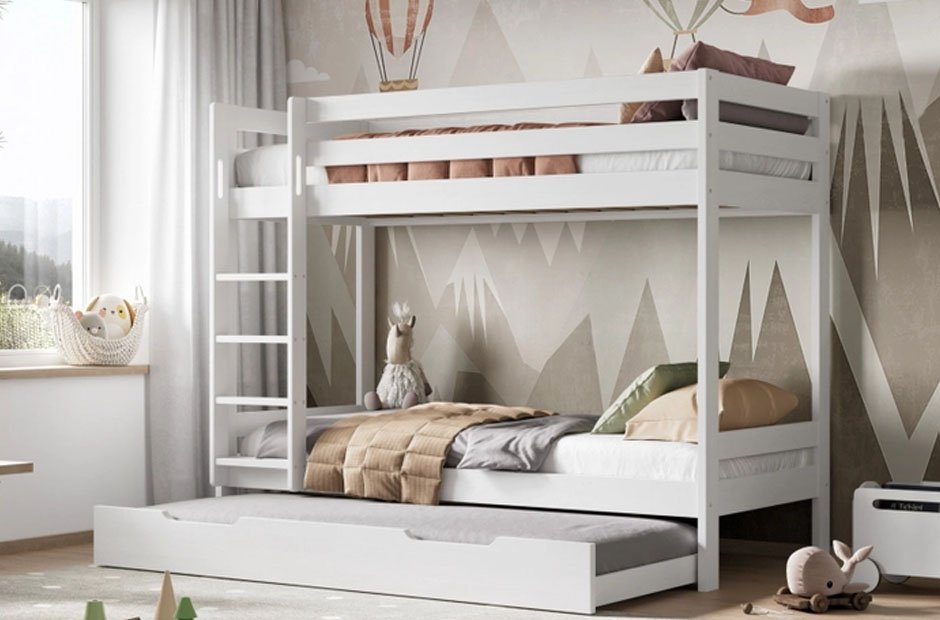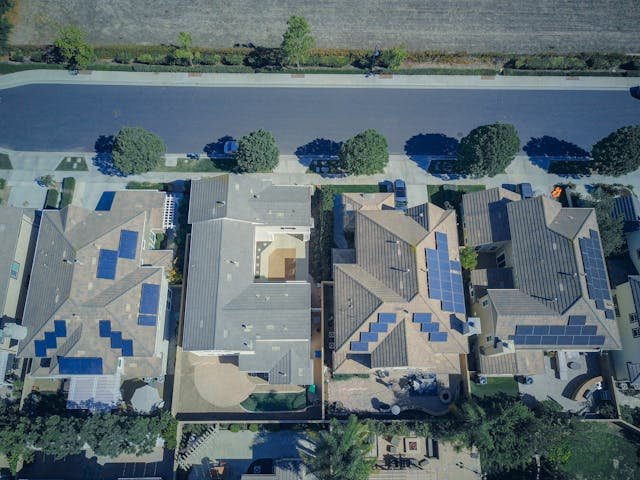When selecting bunk beds for your kids, safety ranks paramount. Of great importance are robust guardrails on the top bunk and a sturdy ladder securely attached for safe access. Recognizing these essentials can ease the minds of parents while ensuring the well-being of their children. Bunk bed designs have evolved to not only save space but to do so without compromising on the safety features that protect your little ones from potential accidents.
Understanding the potential risks associated with bunk beds can help in mitigating them. The right selection involves examining the bed’s constitution for durability and stability, ensuring that it can withstand the rigors of children’s use. Guardrails should envelop the top, with no wide gaps that could pose a risk of entrapment or falls. Additionally, considering the age and coordination of each child is crucial; for instance, very young children, particularly those under six, should not sleep on the top bunk due to their increased risk of falls.
Key Takeaways
- Guardrails and sturdy ladders are vital for bunk bed safety.
- Beds should be evaluated for stability and conformity to safety standards.
- The age and coordination of a child determine the appropriateness of bunk bed use.
Essential Bunk Bed Safety Features
When selecting a bunk bed for children, identifying key safety features is crucial to minimize risk. These features ensure the bed provides a secure sleeping environment.
Guardrails and Rail Gaps
Bunk beds must have guardrails on both sides of the top bunk to prevent falls. Federal safety standards require that these guardrails extend at least five inches above the mattress and that any gap between the guardrail and mattress should be small enough to prevent entrapment, typically less than 3.5 inches.
Sturdy Ladder and Bed Frame
The ladder should be securely attached to the bunk bed and able to bear a child’s weight without wobbling. A strong bed frame that does not bend or creak under load is essential to support the mattress and occupant securely.
Proper Mattress Fit and Support Slats
Bunk beds require a tight fit between the mattress and the frame to avoid gaps that can entrap a child. The foundation should include multiple support slats to prevent the mattress sagging and provide ample support, accommodating the weight of the mattress and child.
Safety Standards and Certifications
It is advisable to choose bunk beds that meet federal safety standards as set by groups like the American Academy of Pediatrics. Some products may also comply with additional safety norms such as the British safety standard, which adds a layer of assurance.
Age Recommendations and Weight Limits
Manufacturers often specify an age recommendation for the top bunk, typically starting from six years old. It’s essential to adhere to recommended weight limits to ensure the longevity and safety of the bunk bed, as exceeding these can lead to structural failures.
Safety Precautions and Best Practices
When selecting bunk beds for children, ensure they adhere to strict safety standards to prevent falls and injuries. Thorough supervision, understanding of potential hazards, proper maintenance, and appropriate use of accessories are paramount.
Supervision and Education
Supervise children, especially those under six years of age, as they are not recommended for the upper bunk due to a higher risk of falls. Parents should educate their children on safe usage, such as no rough play or jumping on the beds, to avoid bunk bed-related injuries. The child’s room should have a night light to provide visibility for the ladder at night.
Avoiding Strangulation and Entrapment Hazards
Check for gaps between the bed frame and mattress top, as these should not exceed 3.5 inches to prevent head and neck entrapment. It is important to ensure there are no dangerous gaps or areas where clothing could be caught. Strangulation hazards from belts, ropes, or cords must be eliminated from the bunk bed vicinity.
Regular Inspection and Maintenance
Periodically inspect bunk beds for signs of wear and tear, including damage to the frame, rails, or ladder. Replace or repair any defective parts promptly. Always use a sturdy ladder for access, and tighten connections regularly to maintain the structural integrity of the bed.
Appropriate Accessories and Proximity to Ceiling Fans
When choosing mattresses and bedding for bunk beds, verify that they fit snugly, with guardrails extending at least five inches above the mattress top to prevent falls. Position bunk beds away from ceiling fans and other furniture to minimize the risk of accidents. Avoiding the use of ceiling fans directly over bunk beds can prevent dangerous interactions.
Conclusion
Bunk bed safety is critical for protecting children from preventable injuries. Key safety features include sturdy guardrails on both sides of the top bunk, and ensuring that any gaps between rails are no more than 3.5 inches to prevent entrapment or strangulation risks. Consumers should verify that bunk beds meet current safety standards and are constructed with non-toxic materials. Equipping children with safe sleeping environments must be a paramount consideration for caregivers and furniture manufacturers.
















